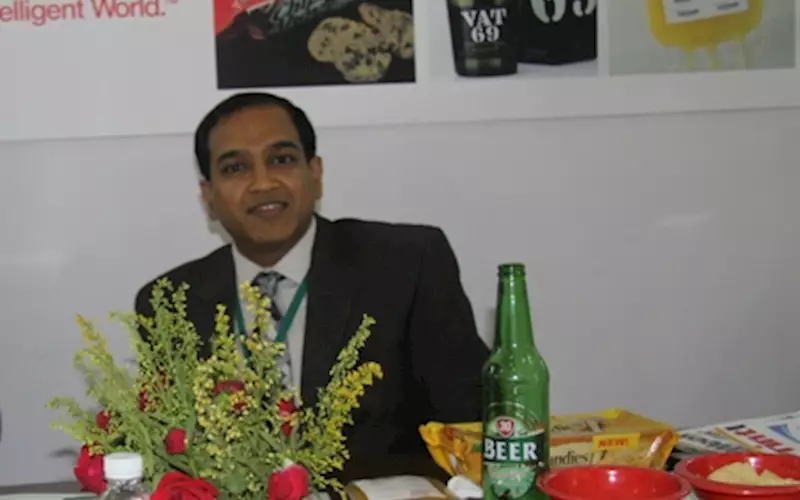PWI speaks to Anil Sharma, managing director - South Asia and Sub Saharan Africa at Avery Dennison , an exhibitor at Labelexpo India 2012.
How many label expos have you attended?
We have been in all the six label expos. We have supported every initiative LMAI has done in India, including the LMAI Avery Dennison Label Awards.
From last label expo to now, how has the industry changed?
The industry has evolved in technology and capability of converting customers. We have been able to support this change. Customers are now starting to look for more functional labels. There is clearly an appreciation, and customers are ready to pay value for the performance improvement that we are able to bring. For example, in the last one year, we have launched PET 23 liners to improve recyclability, and bring efficiency for converting partners and users.
The performance of adhesives in testing conditions, clarity of labels, and functionality of labels are few trends that are emerging. We anticipate the need, we develop a product and then we have the converting partner to turnaround jobs. All the products you see at our portfolio here is inspired from the demands of the end customer.
FDI will give the much needed thrust to the retail segment, while stringent regulations will give a boost to the pharma segment. In food and beverages, it’s more about customisation and uniqueness that will increase the brand exposure and brand value of the product.
Are brand managers really aware of the innovations that are available in the market?
To answer you in one word, the answer is: yes. If you see the end user engagement initiative that we are following now, we try to bring in awareness about latest developments and then offer complete solution. We have been engaging with brand managers and also their packaging team to devise various applications.
How has digital label printing presses changed the market?
Digital is growing very fast owing to the emerging needs of differentiation. Most of our products are supposed to work with all the print technologies. However, we also have specific products for digital and narrow web flexo label presses. Within the digital, we have products suiting the tonner based and ink-based printing.
Consumption of labels in India is estimated to be just 5% of the global pie. What is your outlook towards the Indian label market?
The pressure sensitive labels market of the world is of around 15 bn sq metres. The penetration of self-adhesive labels in the market is only about 30-40% of the total pie. India is a much smaller market compared to the global share. Still most of the market sits in the developed economies of the globe. But the opportunity of growth in India is much higher as the per capita consumption of labels in India is very low. We are at a very early stage for evolution.
Will filmic liners make the wet glue labels vanish from the market?
In emerging market, wet glue is the first tool of decoration and eventually, the market moves into higher. Wet glue will never vanish in a market like India. The only possibility is that they would witness a decline in the total share of pie. The per capita consumption of labels in China is around 1.5 sqm whereas in developed nations the market is at least ten times bigger.
Has the slowdown affected Avery Dennison?
Yes, to a certain extent. With our continued investment in quality and service we plan to grow faster than the market, despite slowdown. Most of the time when we introduce a product, it is rare that we dream of a product and then release it in the market. In India, one should not lose sight of the low levels of penetration of labels in Tier 2 and 3 cities. We are trying to increase the adoption, so that we will have more opportunity to get something more out of the market.
The trend in pressure sensitive labels is towards shorter runs. How will that affect your markets?
In fact, according to me it is an opportunity. Pressure sensitive labels lets you have shorter run and can do late stage differentiations; two things that will become more important as you start serving the premium markets. So this particular driver is an advantage to the industry.
Is Avery Dennison ready to take benefits of the growth thrust that the label industry is soon expected to receive?
We are not only geared up from the point of view of total capacity but also from capability point of view. We are trying to offer wider baskets of solutions within a sustainable environment. Within few months of opening the Knowledge Centre we are installing another line of coating machines.
Another trend is about down gauged label stocks. How does Avery cater to this market?
At Labelexpo, we are showcasing several products that are based on the PET 23 micron liners. We presented a 12 micron label stock as a commercial technology during the Brussels show. We are waiting for certain economies of scale to come through. We are also waiting for specialised converting machine manufacturers as they would need to re-engineer certain elements of their machine to utilise the thin liners.
PP and PET liners are of course a move towards a sustainable and eco-friendly model. But according to you, who is responsible for initiating a proper recycling process?
Today converter and users are using different ways of recycling. I am yet to meet a customer who is not interested in adopting eco-friendly technologies. In several countries, we take the lead and work with third party companies to take the goods from the end users and recycle them. However, the model can’t be easily replicated in all the countries. The onus of developing a sustainable ecosystem lies with all the stakeholders, be it customer, converter, solution provider or the brand.












 See All
See All